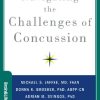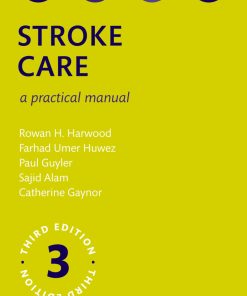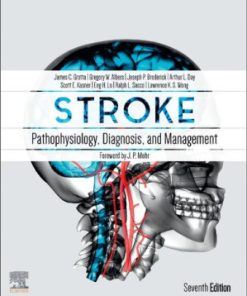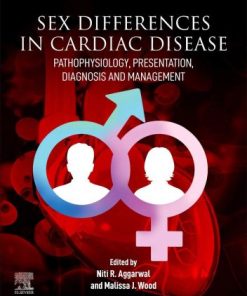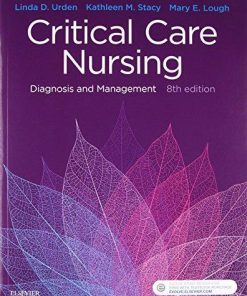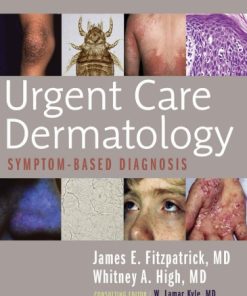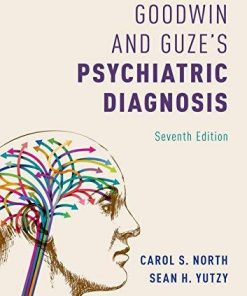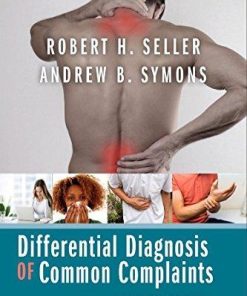Stroke: Pathophysiology, Diagnosis, And Management 7th Edition James 0323694268 9780323694261
$50.00 Original price was: $50.00.$25.00Current price is: $25.00.
This completed downloadable of Stroke: Pathophysiology, Diagnosis, And Management 7th Edition James Grotta
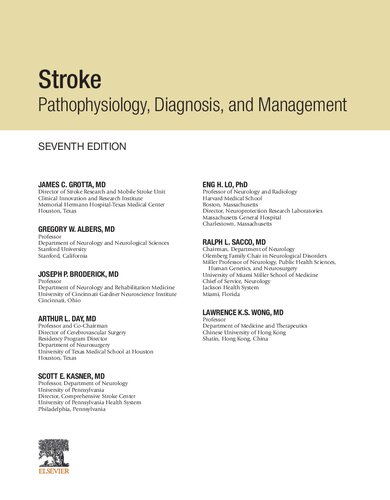
Instant downloaded Stroke: Pathophysiology, Diagnosis, And Management 7th Edition James Grotta pdf docx epub after payment.
Product details:
- ISBN-10: 0323694268
- ISBN-13: 9780323694261
- Author: James Grotta
Authored by the world’s foremost stroke experts, this classic text brings you fully up to date with current research findings and management approaches for cerebrovascular disease. Stroke: Pathophysiology, Diagnosis, and Management, 7th Edition, covers every aspect of this fast-moving field, and is an ideal resource for stroke specialists, general neurologists, and other medical professionals with an interest in stroke. You’ll find expert clinical guidance, comprehensive pathophysiology coverage, data from recent trials, advances in diagnostic tests, full-color CT images, pathology slides, and much more, for a complete picture of today’s stroke medicine.
Table of contents:
1. Cerebral Vascular Biology in Health and Disease
Introduction
Organization of the Cerebral Circulation
Physiologic Regulation of Cerebral Vascular Tone
Alterations in Cerebral Vascular Function During Hypertension and Atherosclerosis
Conclusion
2. Mechanisms of Thrombosis and Thrombolysis
Thrombus Formation
Fibrinolysis
Plasminogen Activators
Sequential Combinations of Plasminogen Activators in Exogenous Thrombolysis
Regulation of Endogenous Fibrinolysis
Clinical Consequences of Therapeutic Plasminogen Activation
Limitations to The Clinical use of Fibrinolytic Agents for Ischemic Stroke
Plasminogen Activators in Cerebral Tissue
Plasminogen Activators in Experimental Cerebral Ischemia
Plasminogen Activators and Recanalization in Ischemic Stroke
Endovascular Interventions
Plasminogen Activators and Cerebral Hemorrhage in Ischemic Stroke
Conclusion
3. Cerebral Blood Flow and Metabolism: Regulation and Pathophysiology in Cerebrovascular Disease
Normal Cerebral Energy Metabolism Energy Metabolism and Hemodynamics
Cerebral Blood Flow and Other Measurements of Cerebral Perfusion
Acute Ischemic Stroke
Intracerebral Hemorrhage
Aneurysmal Subarachnoid Hemorrhage
Conclusions
4. Histopathology of Brain Tissue Response to Stroke and Injury
Four Broad Categories of Cerebral Ischemia
Large Vessel Strokes
Small Vessel Strokes
Tissue Response to Therapy of Cerebral Ischemia
Conclusions
5. Molecular and Cellular Mechanisms of Ischemia-Induced Neuronal Death
Introduction
Global Ischemia
Experimental Models of Global and Focal Ischemia
Modalities of Ischemic Cell Death
Triggers of Ischemic Cell Death
Mechanisms and Regulations of Ischemic Neuronal Death
6. Intracellular Signaling: Mediators and Protective Responses
Preconditioning
Windows of Preconditioning
Induction of Preconditioning
Cross-Tolerance
Cellular Defense
Cellular Maintenance
Regeneration and Repair
7. The Neurovascular Unit and Responses to Ischemia
Introduction
Architecture of the Central Nervous System and the Neurovascular Unit
Evidence for the Neurovascular Unit
Summary and Implications
8. Mechanisms of Damage After Cerebral Hemorrhage
Experimental Models of Intracerebral Hemorrhage
Mechanism of Brain Injury After Intracerebral Hemorrhage
Blood-Brain Barrier Disruption
Therapeutic Approaches Targeting ICH Pathogenesis in Animal Research
Conclusion
9. White Matter Pathophysiology
White Matter Anatomy and Physiology
Model Systems for Studying White Matter Ischemia
Effects of Ischemia on White Matter
Mechanisms of White Matter Injury
Autoprotection in White Matter
10. Inflammation and Immune Response
Initiation and Local Propagation of the Immune Response After Stroke
The Peripheral Immune Response to Stroke
The Role of the Immune System in Post-Stroke Brain Repair
Immunomodulation and Immune Cell Therapies as a Therapeutic Approach
From Bench to Bedside
Conclusions
11. Mechanisms of Plasticity Remodeling and Recovery
Introduction
Endogenous Brain Remodeling After Stroke
Exogenous Therapies for Stroke
Conclusion
12. Genetics and Vascular Biology of Brain Vascular Malformations
Brain Arteriovenous Malformations
Genetic Studies of Non-familial Arteriovenous Malformation
Cerebral Cavernous Malformations
13. Gliovascular Mechanisms and White Matter Injury in Vascular Cognitive Impairment and Dementia
Introduction
Conclusions and Future Opportunities
Section II. Epidemiology and Risk Factors
Introduction
14. Global Burden of Stroke
Introduction
Interpretations of GBD Stroke Trends
15. Stroke Disparities
Introduction
Racial and Ethnic Disparities in Stroke
Geographic Disparities in Stroke
Socioeconomic Status and Stroke
Conclusions
16. Risk Factors and Prevention
Epidemiology and Risk Factors
Mortality
Cost
Incidence of Stroke
Frequency of Stroke by Type
Risk Factors for Stroke
Preventing a First Stroke
17. Prognosis After Stroke
Introduction
Mortality After Ischemic Stroke
Reccurence After Ischemic Stroke
18. Vascular Dementia and Cognitive Impairment
Historical Evolution of the Concept of Vascular Dementia
Diagnostic Criteria for Vascular Dementia
Cognitive Impairment and Dementia Following Stroke
Overlap of Vascular and Neurodegenerative Pathologies
Epidemiology
Neuropsychological Assessments of Vascular Cognitive Impairment
Imaging Correlates of Vascular Cognitive Impairment (fig. 18.2)
Neuropathologic Aspects
Prevention of Vascular Cognitive Impairment
Treatment of Persons With Clinical Vascular Dementia
Control of Vascular Risk Factors
Pharmacologic Treatment of Cognitive Impairment
Summary
19. Genetic Basis of Stroke Occurrence, Prevention, and Outcome
Introduction
Evidence for Heritability of Stroke and its Subtypes
Disorders Associated with Ischemic or Hemorrhagic Stroke
Intracranial Aneurysms
Section III. Clinical Manifestations
Introduction
20. Classification of Ischemic Stroke
History
Challenges in the Diagnosis of Etiologic Subtypes
Probabilistic Approach to Etiologic Stroke Classification
Phenotypic Versus Causative Classification
Unstable Causative Etiology
Large Artery Atherosclerosis
Embolism Attributed to Cardiac Sources
Small Artery Occlusion
Uncommon Causes of Stroke
Stroke of Undetermined Etiology
21. Clinical Scales to Assess Patients With Stroke
Desired Qualities of Stroke Scales
Scales Used by Emergency Medical Services
Scales to Differentiate Hemorrhagic Stroke From Ischemic Stroke
Differentiation of Ischemic Stroke Syndromes
Scales to Quantify the Severity of Intracerebral Hemorrhage
Scales to Quantify the Severity of Subarachnoid Hemorrhage
Scales to Quantify the Severity of Ischemic Stroke
Systems to Forecast the Risk of Stroke Among Patients with Transient Ischemic Attack
Risk Stratification Assessment of Transient Ischemic Attack
Scales Used to Assess Patients with Atrial Fibrillation
Systems to Differentiate the Cause of Ischemic Stroke (Stroke Subtype)
Scales and Measures to Assess Responses to Rehabilitation Interventions
Scales to Rate Outcomes (Disability) After Stroke
Scales to Rate Outcomes (Global or Handicap) After Stroke
Scales to Assess the Quality of Life After Stroke
22. Carotid Artery Disease
Epidemiology
Carotid Anatomy and Lesion Development
Pathophysiology of Atherosclerosis
Evaluation of Extracranial Carotid Stenosis
Intracranial Carotid Artery Disease
Carotid Disease Other Than Atherosclerosis
Pathophysiology of Carotid Artery Ischemia
Clinical Syndromes From Carotid Artery Disease
Transient Ischemic Attacks
Stroke Risk in Patients With Carotid Disease
23. Anterior Cerebral Artery Disease
Anatomy
Symptoms and Signs
24. Middle Cerebral Artery Disease
Descriptive Terms
Histology
Pathology
Clinical Syndromes of Middle Cerebral Artery Territory Infarction
Clinical Syndromes From Infarction of Either Hemisphere
Syndromes Referable to Language-Dominant (Usually Left) Hemisphere Infarction
Syndromes of Infarction in the Hemisphere Nondominant for Speech and Language
25. Posterior Cerebral Artery Disease
Anatomy
Pathology and Stroke Mechanisms
Prevalence and Frequency of Involved Structures
Clinical-Topographic Correlation
Prognosis
26. Vertebrobasilar Disease
Anatomy
Pathology and Stroke Mechanisms
Small Artery (Penetrating Artery) Disease
Cardiac Embolism
Vascular Topographic Syndromes
Pontine Infarcts
Clinical-Topographic Correlation
Midbrain Infarction
Cerebellar Infarcts
Top of the Basilar Artery Syndrome
27. Lacunar Syndromes, Lacunar Infarcts, and Cerebral Small-Vessel Disease
Historical Aspects
The Spectrum Of Cerebral Small-Vessel Disease
Definitions
Pathoanatomy
Risk Factors
Imaging Studies
Clinical Syndromes
Prognosis
28. Intracerebral Hemorrhage
Introduction
Organization of Care
Secondary Prevention
Conclusions
29. Aneurysmal Subarachnoid Hemorrhage
Historical Aspects
Epidemiology
Pathophysiology
Clinical Presentation
Radiographic and Diagnostic Testing
Searching for the Aneurysm
Management
Summary of Management of Patients With Subarachnoid Hemorrhage
Harmonization of Clinical Variables
Outcomes
30. Arteriovenous Malformations and Other Vascular Anomalies
Introduction
Anomalies of the Arterial Wall
Anomalies of the Capillary Junction
Anomalies of Cerebral Veins
31. Stroke and Other Vascular Syndromes of the Spinal Cord
Introduction
Historical Aspects
Anatomy: Blood Supply to the Spinal Cord
Physiology of Spinal Cord Blood Flow
Etiology
Clinical Presentation of Spinal Cord Infarction
Differential Diagnosis
Diagnostic Testing
Treatment
Prognosis
Section IV. Specific Conditions and Stroke
Introduction
32. Cardiac Diseases
Clinical Features of Cardioembolic Transient Ischemic Attack or Stroke
Diagnostic Studies
Approach to Management
Specific Cardiac Conditions Causing Cerebral Embolism
33. Atherosclerotic Disease of the Proximal Aorta
Frequency of Aortic Plaques in the General Population
Plaque Morphology and Stroke Risk
Natural History of Aortic Plaques
Aortic Plaques in Stroke Patients of Different Race-Ethnicity
Factors Associated With Aortic Plaques in Stroke Patients
Aortic Plaques and Subclinical Cerebrovascular Disease
Proximal Aortic Plaques and Atrial Fibrillation
Proximal Aortic Plaques and Carotid Artery Disease
Proximal Aortic Plaques and Coronary Artery Disease
Proximal Aortic Plaques and Transcatheter Aortic Valve Replacement
Atherosclerosis of Aortic Arch Branch Vessels and Ischemic Stroke Risk
Proximal Aortic Plaques and Ischemic Stroke—Future Directions
Summary
34. Stroke Related to Surgery and Other Procedures
Introduction
Perioperative Risk Assessment
Carotid Assessment Prior to Cardiac and Other Surgery
Periprocedural Antithrombotic Management in Patients With Cerebrovascular Disease
Acute Stroke Therapy
Conclusion
35. Arterial Dissection, Fibromuscular Dysplasia, and Carotid Webs
Arterial Dissections
Fibromuscular Dysplasia
Carotid Webs
36. Inflammatory and Infectious Vasculopathies
Vasculitides of the Central Nervous System
Infectious Diseases and Stroke
37. Reversible Cerebral Vasoconstriction Syndromes
Introduction
History, Evolution, and Associated Conditions
Demographics and Clinical Features
Laboratory Findings
Brain Imaging
Differential Diagnosis
Etiology and Pathophysiology
Management
Outcome and Prognosis
38. Posterior Reversible Encephalopathy Syndrome
Definition and Clinical Features
Historical Recognition of Posterior Reversible Encephalopathy Syndrome
Epidemiology and Associated Clinical Conditions
Clinical Features, Exam and Laboratory Findings
Imaging Findings
Pathophysiology
Treatment
Sequelae
39. Stroke and Substance Abuse
Opioids
Amphetamine and Related Agents
Cocaine
Phencyclidine
Lysergic Acid Diethylamide
Marijuana
Barbiturates
Inhalants
Alcohol
Tobacco
40. Moyamoya Disease
Guideline for Diagnosis
Epidemiology
Pathology
Etiology and Pathogenesis
Clinical Symptoms and Signs
Laboratory Findings
Clinical Examination
Disease Progression and Prognosis
Treatment
Conclusion and Future Directions
41. Cerebral Autosomal Dominant Arteriopathy With Subcortical Infarcts and Leukoencephalopathy
History
Clinical Presentation
Neuroimaging
Pathology
Genetics
Diagnosis
Conclusion
42. Hematologic Disorders and Stroke
Introduction
Pathogenesis of Thrombosis
Screening of Patients With Stroke for Coagulopathies
43. Migraine and Stroke
Clinical Features
Classification
Epidemiology
Neuroimaging
Headache of Vascular Disease
Migraine That Mimics Stroke
Mechanisms
Migraine and Patent Foramen Ovale
Stroke Prevention in Patients With Migraine
Treatment of Migraine Attacks in Patients at Risk For Stroke or in Patients With Transient Ischemic Attack or Stroke
44. Cryptogenic Stroke
Definitions
Epidemiology and Diagnosis
Natural History of Cryptogenic Ischemic Stroke
Management Implications of Cryptogenic Ischemic Stroke
Clinical and Research Issues for Cryptogenic Ischemic Stroke
45. Cerebral Venous Thrombosis
Introduction
Epidemiology
Venous Anatomy
Pathophysiology
Etiology
Clinical Aspects
Diagnosis
Prognosis
Treatment
Section V. Diagnostic Studies
Introduction
46. Ultrasonography
Introduction
Applied Principles of Ultrasound Physics
Transcranial Doppler
47. Computed Tomography-Based Evaluation of Cerebrovascular Disease
Noncontrast Computed Tomography
Computed Tomography Angiography
Computed Tomography Perfusion Imaging
Posterior Circulation Computed Tomography Imaging
Noncontrast Computed Tomography and Computed Tomography Angiography in Acute Hemorrhagic Stroke
48. Magnetic Resonance Imaging of Cerebrovascular Diseases
General Principles of Magnetic Resonance Imaging
Clinical Applications of MRI in Patients With Cerebrovascular Disease
Transient Ischemic Attacks
Diffusion-Weighted MRI
Magnetic Resonance Perfusion
Implications of MRI for Transient Ischemic Attack Definition and Clinical Guidelines
49. Cerebral Angiography
Technique
Risks
Angiographic Cerebral Vasculature: Normal Anatomy
Indications
50. OMICs in Stroke: Insight Into Stroke Through Epigenomics, Transcriptomics, Proteomics, Lipidomics, and Metabolomics
Introduction
Epigenomics
Transcriptomics
Proteomics
Metabolomics
Lipidomics
Conclusions
Therapy
Part A. Medical Therapy
Introduction
51. Stroke Systems of Care and Impact on Acute Stroke Treatment
Thrombolysis and Thrombectomy—Demographics
Thrombolysis and Thrombectomy—How to Get the Right Patient to the Right Hospital?
52. Prehospital and Emergency Department Care of the Patient With Acute Stroke
Introduction
The Course of Events for the Acute Stroke Patient
Recognition of Stroke Symptoms by the Patient or Family Members
First Contact With Medical Care
Dispatch of Prehospital Providers
Summary/Conclusion
53. Intravenous Thrombolysis
Thrombosis and Thrombolysis
Preclinical Studies of Thrombolysis for Acute Stroke
Clinical Studies of Thrombolysis for Acute Stroke
Guidelines for Intravenous Thrombolysis in Acute Stroke—Then and Now
Combination Treatment
Conclusion
54. Antithrombotic Therapy for Treatment of Acute Ischemic Stroke
Rationale
Pharmacology
Safety of Emergency Antithrombotic Treatment for Patients With Acute Ischemic Stroke
Efficacy of Treatment of Acute Ischemic Stroke
Conclusions
Current Status of Antithrombotic Therapy
Future of Antithrombotic Therapy
55. General Stroke Management and Stroke Units
Introduction
Stroke Unit Care
General Stroke Management
Reassess the Patient Medically and Neurologically
Ascertain Definite Stroke Diagnosis and Rule Out Stroke Mimics
Establish Stroke Etiology
Achieve and Maintain Vital Functions Within or Close to Physiologic Ranges (Homeostasis)
Prevent, Diagnose, and Treat Complications
Detect Risk Factors and Start Preventive Measures for Avoiding Recurrences
Start Early Rehabilitation
Be Active in Stroke Research and Education
When Hope is Lost, Remember Organ Donation
Conclusions
56. Critical Care of the Patient With Acute Stroke
General Principles in The Care of The Critically Ill Stroke Patient
Specific Treatment of Various Stroke Syndromes
Temperature Management
Conclusion
57. Pharmacologic Modification of Acute Cerebral Ischemia
Background: Preclinical and Clinical Cytoprotection
Clinical Cytoprotective Therapy Trials
Conclusion
58. Treatment of “Other” Stroke Etiologies
Vascular Disorders
Hematologic Disorders
Miscellaneous Disorders
59. Medical Therapy of Intracerebral and Intraventricular Hemorrhage
Emergency Department Management
The Importance of Intensive Medical Therapies
Prevention of Hematoma Expansion
Management of Cerebral Edema, Hydrocephalus, and Intraventricular Hemorrhage
Selection of Patients for Surgery
Special Considerations in Anticoagulant-Related Intracranial Hemorrhage
Restarting Antithrombotic Medications After Intracerebral Hemorrhage
Predictors of Outcome and Withdrawal of Life-Sustaining Treatments
Conclusions
60. Rehabilitation and Recovery of the Patient With Stroke
Mechanisms for Gains
Assessing Impairment, Disability, Activity, and Quality of Life
Rehabilitation-Related Medical Complications
Overview of Practices
Motor Rehabilitation
Upper Extremity and Self-Care Skills
Conclusions
61. Interventions to Improve Recovery After Stroke
Biology of Stroke Recovery Suggests Therapeutics Targets
Repair-Based Therapies are Distinct From Acute Therapies
Drugs
Biologic Agents
Activity-Based Therapies
Principles of Repair-Based Clinical Trials After Stroke
62. Enhancing Stroke Recovery With Cellular Therapies
What are Cell Therapies?
Mechanisms, Rationale, and Temporal Windows
Different Cell Types and Their Categorization
Delivery Routes
Steps Guidelines for Translation From Bench to Clinical
Spectrum of Different Cell Types
Extracellular Vesicles
Clinical Trials
Future Directions
63. Antiplatelet Therapy for Secondary Prevention of Stroke
Understanding Platelet Physiology in the Planning of Antiplatelet Therapy
Platelet Function in Patients At Risk of Occlusive Stroke
Antiplatelet Drugs in Stroke Prevention
Combinations of Antiplatelet Agents
Other Antiplatelet Agents
Antiplatelet and Cerebral Microbleeds
Conclusions
64. Secondary Prevention of Cardioembolic Stroke
Atrial Fibrillation
Summary
65. Design of Stroke-Related Clinical Trials
When Can a Stroke-Related Trial be Conducted?
Types of Prevention Trials
Therapeutic Trials
The Phases of Clinical Trials
Outcome Measures
Inclusion and Exclusion Criteria for Phase 3
Randomization
Recruitment
Adherence to Treatment and Trial Follow-Up
Data Analyses
Missing Data
Adaptive Designs
Sample Size
Study-Level and Patient-Level Meta-Analyses
Protocol, Manual of Procedures, and Statistical Analysis Plan
Regulations and Guidelines
Part B. Interventional Therapy
Introduction
Introduction
66. Endovascular Therapy of Extracranial and Intracranial Occlusive Disease
Carotid Artery Stenosis
Extracranial Vertebral Artery Stenosis
Intracranial Atherosclerosis
67. Endovascular Treatment of Acute Ischemic Stroke
Introduction
Mechanical Thrombectomy
Anterior Circulation
Late Time Window
Clinical Practice Guideline Recommendations
Posterior Circulation
Time to Angiographic Reperfusion and Clinical Outcome After Acute Ischemic Stroke
Organization of Systems of Care for Acute Ischemic Stroke
Future Directions
Conclusion
68. Endovascular Treatment of Intracranial Aneurysms
Historical Overview
Evidence for Endovascular Treatment of Ruptured Aneurysms
Evidence for Endovascular Treatment of Unruptured Aneurysms
Techniques of Endovascular Aneurysm Treatment
Preprocedural Management: Unruptured Aneurysms
Preprocedural Management: Ruptured Aneurysms
Intraprocedural Management
Postprocedural Management
Summary
69. Interventional Therapy of Brain and Spinal Arteriovenous Malformations
Introduction
Brain Arteriovenous Malformations
Spinal Arteriovenous Malformations
70. Dural Arteriovenous Malformations
Introduction
Clinical Presentation
Pathophysiology and Lesion Evolution
Part C. Surgical Therapy
Introduction
71. Surgery of Anterior and Posterior Aneurysms
Anterior Circulation
Internal Carotid Artery
Posterior Circulation
72. Surgery for Intracerebral Hemorrhage
Introduction
73. Management of Intraventricular Hemorrhage
Introduction
74. Surgical Management of Cranial and Spinal Arteriovenous Malformations
Introduction
Cerebral Arteriovenous Malformations
Spinal Arteriovenous Malformations
Abbreviations
Disclosures and Financial Support
75. Surgical Management of Cavernous Malformations and Venous Anomalies
Natural History
Epidemiology
Pathophysiology
Genetic Considerations
Diagnostic Imaging
NonOperative Management
Neurosurgical Considerations
Stereotactic Radiosurgery
Stereotactic Laser Ablation
Venous Anomalies
Conclusions
76. Indications for Carotid Endarterectomy in Patients With Asymptomatic and Symptomatic Carotid Stenosis
Introduction
Diagnosis
Treatment Options
Medical Treatment
Carotid Revascularization
Conclusions
77. Extracranial–Intracranial Bypass for Cerebral Ischemia
Introduction
Historical Background
Flow Augmentation
Flow Replacement
Surgical Technique
Conclusion
78. Decompressive Craniectomy for Infarction and Intracranial Hemorrhages
People also search:
stroke pathophysiology diagnosis and management pdf
stroke pathophysiology diagnosis and management 7th edition
stroke ebook pathophysiology diagnosis and management
what is the pathophysiology of stroke
explain the pathophysiology of cva
You may also like…
Medicine - Nursing
Medicine - Anatomy and physiology
Stroke: Pathophysiology, Diagnosis, And Management 7e 2021 7th Edition James Grotta
Medicine - Clinical Medicine
Medicine - Psychiatry
Uncategorized
Uncategorized


